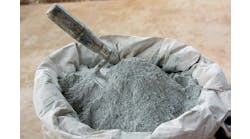Energy-Efficient Process Converts Solid Waste Into Gas to Fuel BoilerShaw Industries and Siemens Building Technologies have developed a process for converting carpet manufacturing waste into energy. The first of its kind, the facility is expected to significantly decrease harmful emissions, greatly reduce the amount of post-manufacturing carpet waste in landfills, and save Shaw's Dalton, Ga. carpet production plant up to $2.5 million per year in energy and related costs.Bill Barron, Shaw vice president of manufacturing, says the project will annually convert approximately 16,000 tons of post-manufacturing and post-consumer carpet waste, and 6,000 tons of wood flour into energy. The facility, scheduled to be fully operable by the end of 2005, will convert the by-products of Shaw's manufacturing process and tons of discarded carpet—previously destined for landfills—into a gas. In turn, that gas will be used to fire a boiler to produce more than 50,000 lbs of steam per hour.According to the company, the conversion of production waste into energy will result in significantly cleaner emissions when compared to the traditional fossil fuels Shaw currently uses to power its textile manufacturing operations. Moreover, by replacing coal and oil with carpet and wood waste to fuel its boilers, Shaw will save millions of dollars per year in steam production costs.Siemens designed, and is currently building the waste-to-energy conversion facility adjacent to carpet manufacturing plant. "Shaw now has in the plans a firm, fixed energy price for its Dalton plant," said Siemens’ energy business development manager Clark Wiedetz. "With the fluctuation of oil and gas prices, that could be a huge competitive advantage in such a price-sensitive industry."
Latest from Industry News
Latest from Industry News



